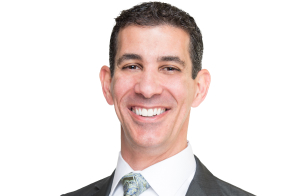Responding effectively to the coronavirus pandemic is a lot like changing out the engine of an airplane while flying it. As healthcare leaders during this crisis, we’re charged with treating and managing the complexity of a new disease impacting our communities and evolving care delivery while keeping our workforce and community safe. What’s more, we often must accomplish in days what used to take years.
To succeed, there’s one group of allies you need on your side: your frontline providers. Clinicians are a healthcare organization’s No. 1 innovation asset and the closest link to the patients and communities they serve. In fact, they may already know the solutions to the problems keeping you awake at night.
From urgent care centers, emergency departments, inpatient units, and intensive care units, clinicians are rapidly designing and implementing healthcare innovations that solve the needs of today and look forward to the demands of the future, including applications for telehealth technology.
So how do you nurture your provider teams into an innovation powerhouse? It all starts with fostering a culture that values individual contributions, clinical excellence, and continuous improvement over the status quo.
Such a culture must empower providers to share ideas for ways to better patient care and focuses the team on this worthy cause. This environment must then be backed by removing obstacles to engagement and innovation and recognizing that change in healthcare is a marathon, not a sprint. To inspire this level of engagement, I recommend the following three principles:
1. Identify the need for collaborative hospital solutions
When weighing a new initiative or beginning to solve for a current challenge, take some time to carefully consider the purpose of the endeavor. Ask yourself what you’re hoping to accomplish, how long it will take, who you’ll need to win over, and how you’ll measure the results.
Engaging your clinical leaders at this step can pay off down the road. Your providers might have a solution to the problem you’re looking to solve, and it works better if you can get your team’s input at this stage rather than taking a top-down approach to problem-solving. For example, if your goal is to increase patient satisfaction, try reaching out to providers who consistently excel in this area. They may suggest starting a callback program, providing in-depth training, recognizing service excellence, or a combination of these approaches.
By inviting input from front line providers, you’ll affirm their value to the organization and gain buy-in ahead of time. You’ll also have an opportunity to identify engaged clinicians who can serve as “champions” for the new initiative.
Innovation in Action: As the coronavirus pandemic ramped up, Vituity clinical leaders across the country worked with their hospital leaders to prepare for possible surges. Solutions were tailored to each location’s layout, resources, and patients. Examples ranged from virtual ED triaging to hospital-at-home models, which expand patient access to care and differentiate health systems from others in their communities.
2. Communicate your vision and encourage physician engagement
Once you’ve decided on a course of action, your next challenge is to engage your teams and keep them focused. The more effectively and consistently you can communicate your vision, the more momentum you’ll generate. What's more, resistance to change tends to dissipate when an idea is riding high on a tide of popular support.
Once again, when it comes to spreading the word, engaged providers are your greatest allies. Clinical and staff leaders can keep the initiative front of mind by building it into their workflows, emphasizing it at huddles and briefings, and recognizing team members who exemplify the hoped-for change.
Finally, remember that communication is a two-way street. Almost all worthwhile accomplishments hit potholes on the road to success. Invite feedback from your front-line providers and be prepared to pivot when needed. Recalibrating goals, procuring needed resources, offering relevant training, and realigning incentives can often help to invigorate a stalled initiative.
Innovation in Action: To disseminate timely guidance around COVID-19, Chief Medical Officer Gregg Miller, MD, organizes regular webinars for Vituity providers. Topics have included clinical advancements, infection control measures, and developing personal resilience. These interactive webinars keep the lines of communication open across Vituity’s more than 4,200 providers.
3. Recognize and reward success in hospital innovation
Like all humans, healthcare providers are hard-wired to thrive on achievement. Affirmation by others in our “tribe” is tied to our primitive survival instincts and causes our bodies to produce mood-boosting dopamine. This makes public recognition one of your most powerful tools for leading change.
Unfortunately, this tool is undervalued — especially now. When a disaster like the pandemic is swirling around us, we often focus on putting out fires instead of recognizing achievements. However, it’s important to remember that crisis is when our teams need our support and affirmation the most.
To this end, commit to rewarding success throughout the change process. Instead of holding your applause for the end of the performance, take time to celebrate the many small victories that happen along the way. View recognition as a magic force that keeps the momentum of change building until it becomes unstoppable.
Innovation in Action: As part of his webinar series, Dr. Miller invites innovative medical directors to share how they are working to combat COVID-19 at their hospitals, with a dedicated opportunity to showcase individual and team accomplishments. Each year, Vituity hosts a dedicated award ceremony that officially showcases the innovative work across the Partnership and rewards providers who exemplify the transformative mindset that characterizes their mission of better patient care.
“By intentionally fostering a culture of innovation and engagement, there’s no limit to what our organizations can achieve in the transformation of healthcare delivery.”
Theo Koury, MD
Healthcare leaders are in this together
This is a challenging time to be a healthcare leader. The responsibility of guiding our communities, clinicians, and staff through the pandemic is a heavy one. At the same time, we have an unprecedented opportunity to shape the future of healthcare for the benefit of patients everywhere.
The good news is that we don’t have to go it alone. By intentionally fostering a culture of innovation and engagement, there’s no limit to what our organizations can achieve in the transformation of healthcare delivery.























